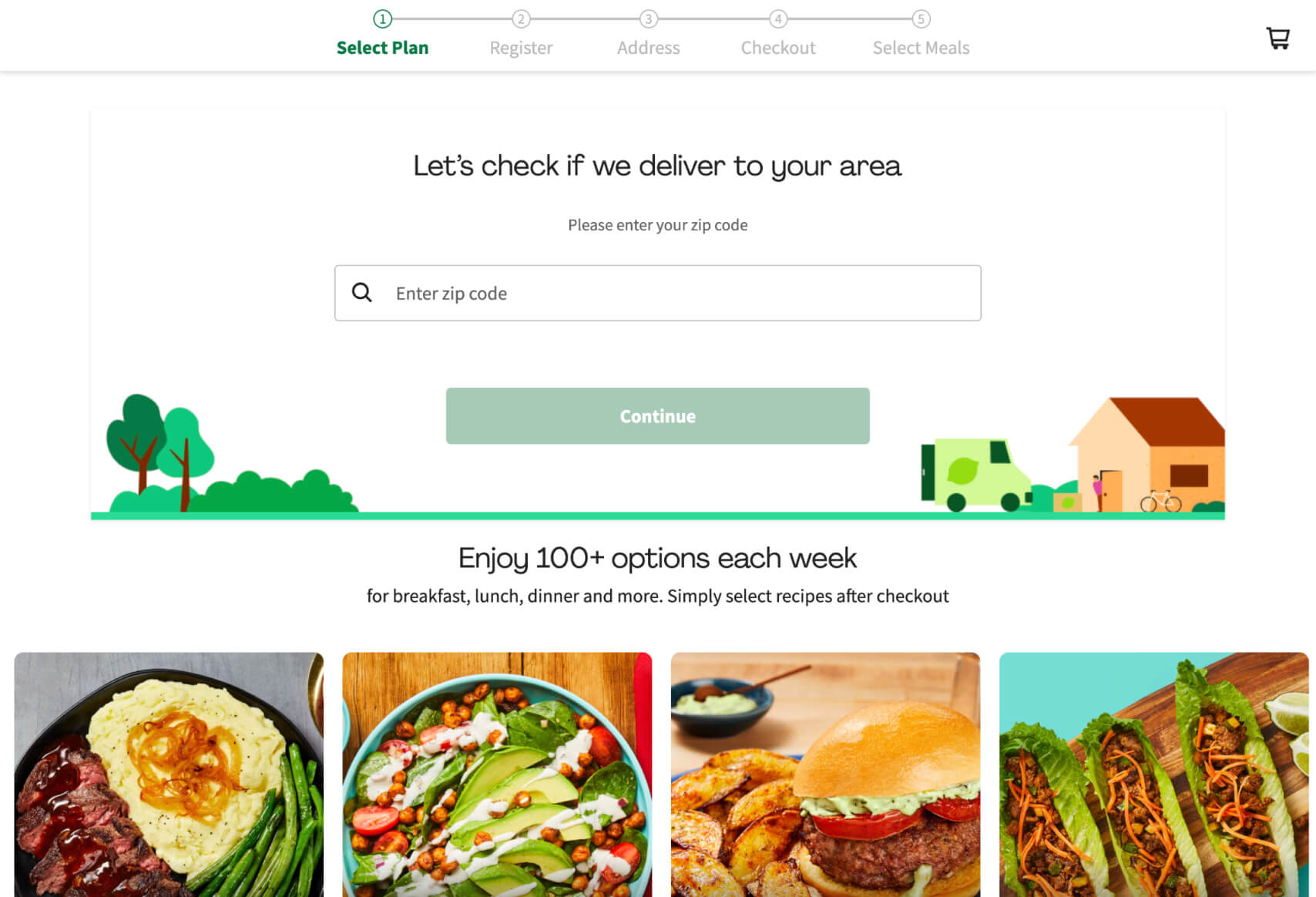
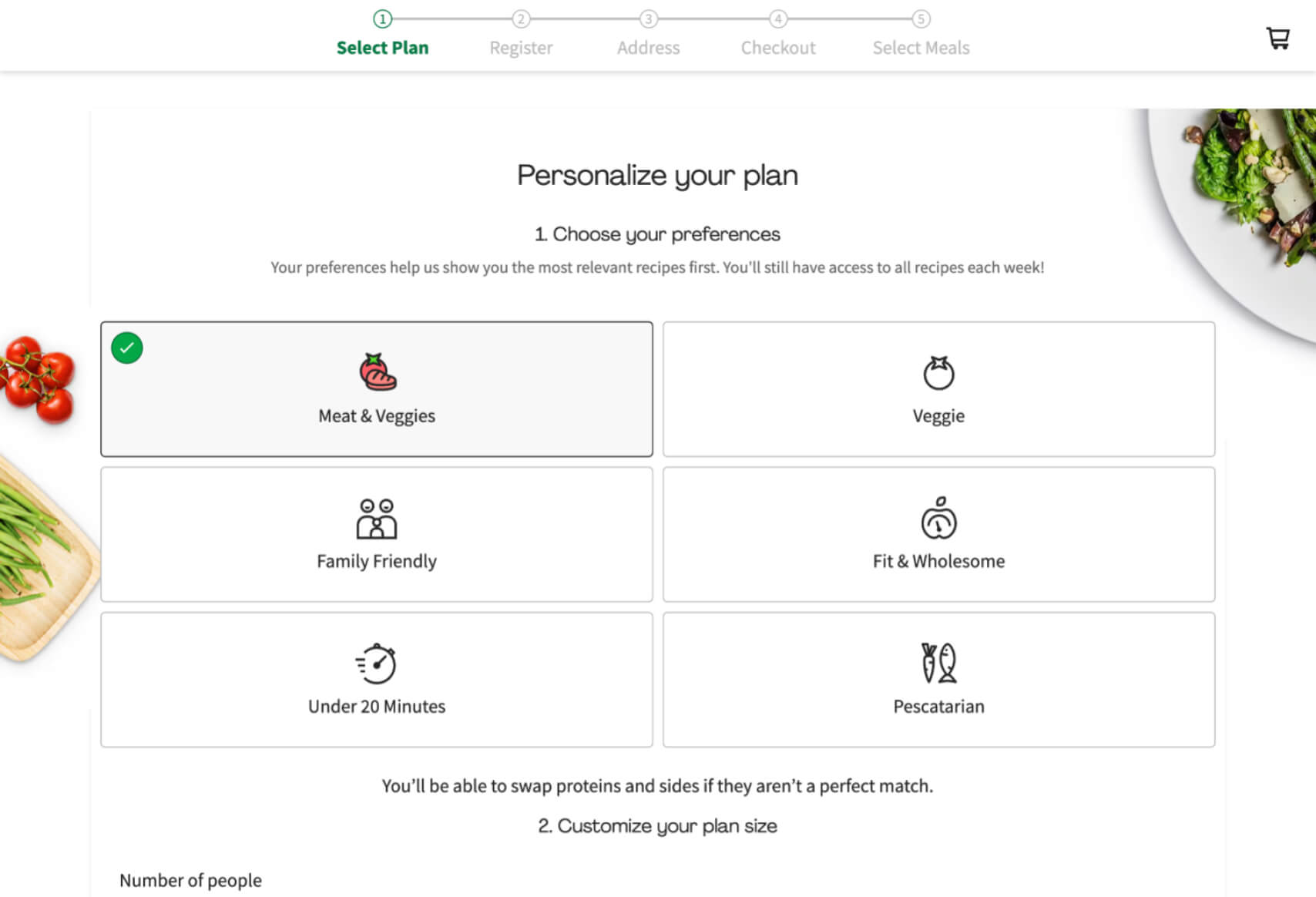
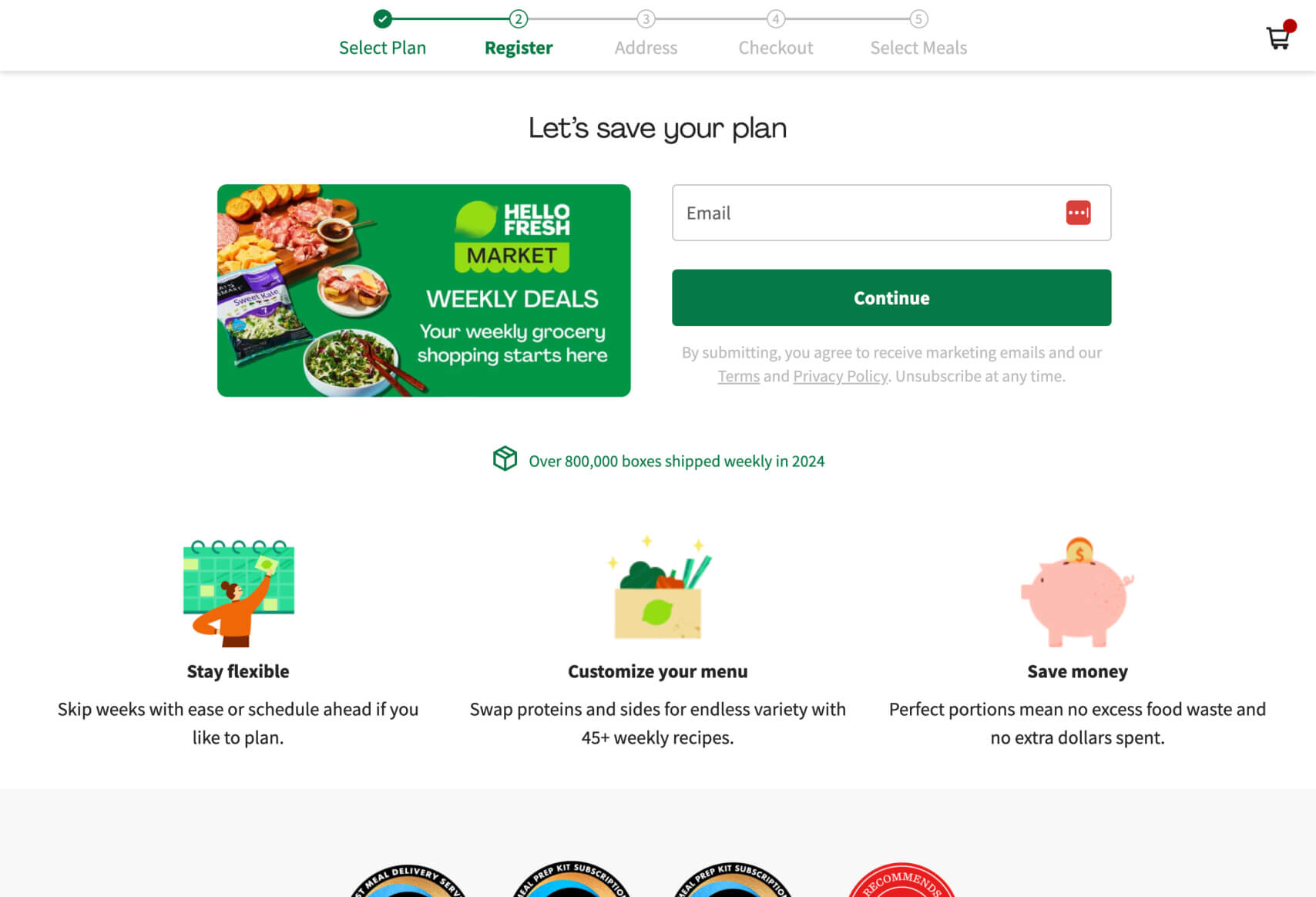
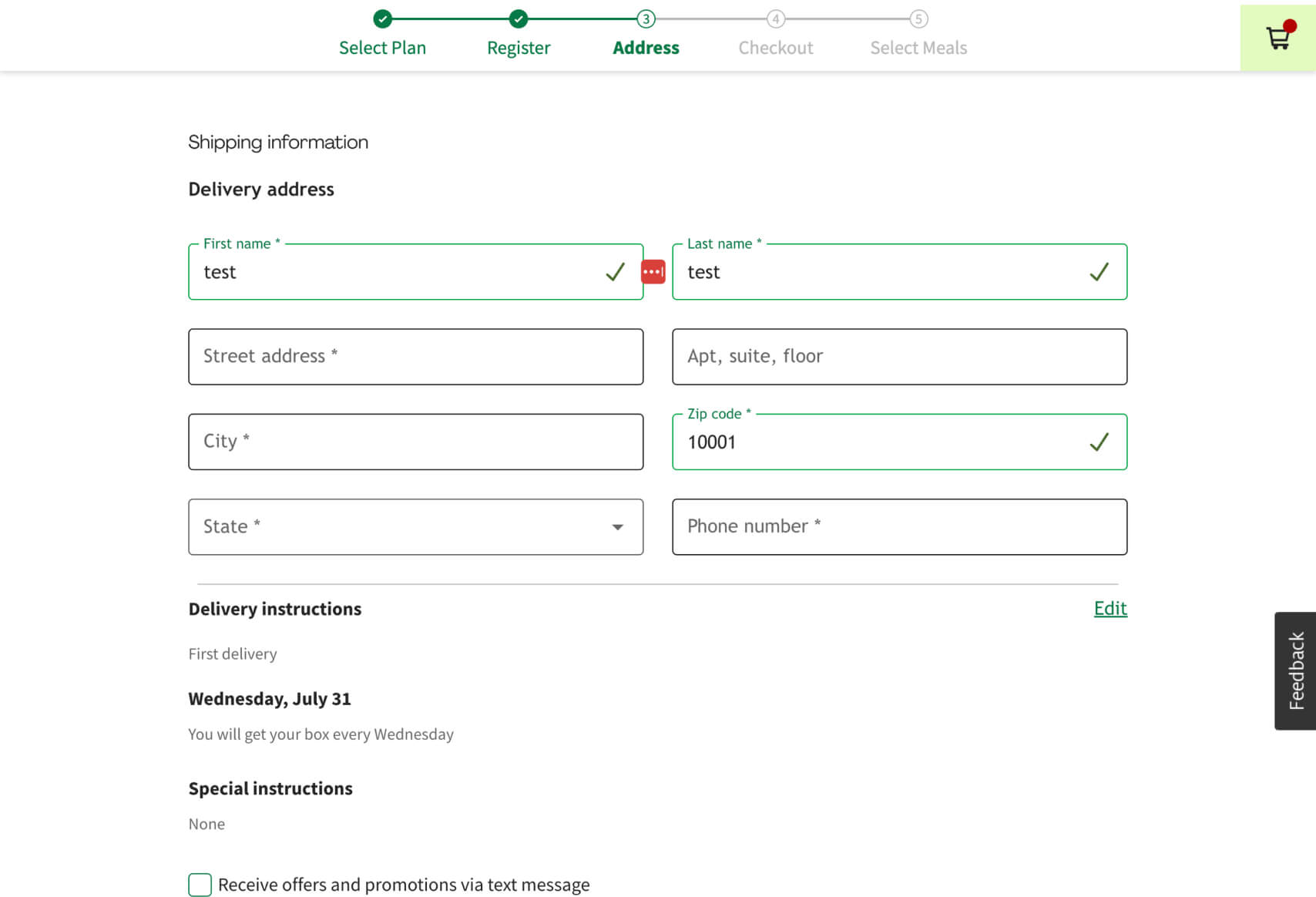
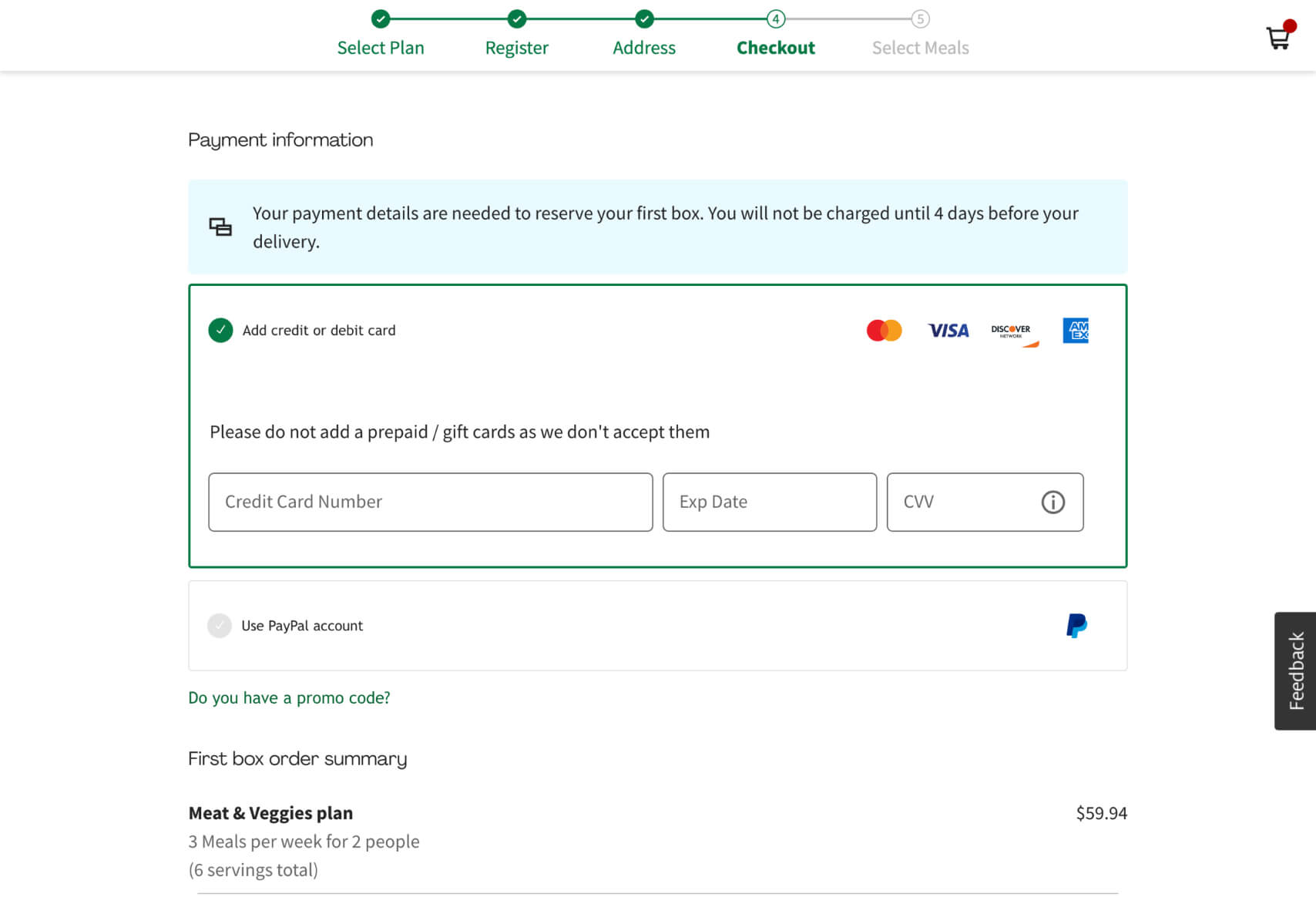
Quick Summary: Why This Funnel Works
- Clear, Structured Navigation: The top navigation bar highlights the user’s progression through each step of the funnel, providing a clear roadmap and reducing the likelihood of users abandoning the process due to uncertainty or confusion.
- Personalization from the Start: By beginning with a prompt to select dietary preferences and customizing the meal plan, the funnel immediately engages the user in a personalized experience, increasing the perceived value of the service.
- Location Verification for Practicality: Checking the user’s zip code at the outset ensures that only users who can actually receive the service proceed, minimizing frustration and wasted effort later in the process.
- Consistent Visual Design: The consistent use of clean, simple visuals and colors throughout the funnel helps maintain focus, reducing cognitive load and enhancing user experience.
- Incentive and Flexibility Communication: The funnel emphasizes flexibility in meal planning, and the potential to save money through proper portioning, which addresses common user concerns and motivates conversion.
Why This Business Might Have Chosen This Funnel
HelloFresh, a leading meal kit delivery service, likely chose this well-structured funnel over a traditional form-based signup for several reasons:
- Personalized User Experience: By starting the funnel with dietary preferences and meal plan customization, HelloFresh engages users by making them feel like the service is tailored specifically to their needs. This personalization can increase user satisfaction and reduce churn.
- User Engagement through Step-by-Step Progression: The clearly marked steps at the top of the screen guide users through the funnel without overwhelming them. This step-by-step progression keeps users engaged, reduces anxiety, and decreases the chances of them abandoning the process.
- Validation of Service Availability: Asking for a zip code upfront ensures that only users who can actually benefit from the service will proceed, which is an efficient way to manage user expectations and reduce frustration.
- Trust-Building Through Transparency: Displaying the order summary and payment information transparently ensures that users are fully aware of what they are committing to before making a payment. This transparency fosters trust and helps in reducing cart abandonment rates.
- Consistent Branding and Messaging: The use of consistent visuals, colors, and messaging across the funnel reinforces HelloFresh’s brand identity. This consistency helps in creating a cohesive experience that feels professional and reliable.
Impactful Questions in HelloFresh’s Funnel
1. “Let’s check if we deliver to your area”
- Practicality and User Relevance: This question ensures that the user does not waste time if the service isn’t available in their area. It streamlines the process and makes the funnel more efficient by filtering out non-eligible users early on.
2. “Personalize your plan”
- Engagement through Customization: Asking users to choose their meal preferences from the start not only engages them but also makes them more invested in the process. This early customization can significantly increase the likelihood of conversion by making the service feel more relevant.
3. “Would you like to save your plan?”
- Commitment and Retention: This question encourages users to commit to their choices by saving their plan, which can help reduce drop-offs. It also serves as a subtle push towards completing the funnel, ensuring that the user’s preferences are not lost if they decide to come back later.
Overall, this funnel serves as an End-to-End Sales Funnel, efficiently guiding users from initial interest through final purchase, all while personalizing the experience to meet individual needs. This approach enhances user satisfaction, drives conversions, and builds long-term customer engagement. For additional examples of high-converting funnels, you can explore more on our listings page.

 No development or design required
No development or design required  Executed by just adding one line of Convincely code to your website
Executed by just adding one line of Convincely code to your website  Plan and strategize with your team. Execute and deploy with Convincely
Plan and strategize with your team. Execute and deploy with Convincely